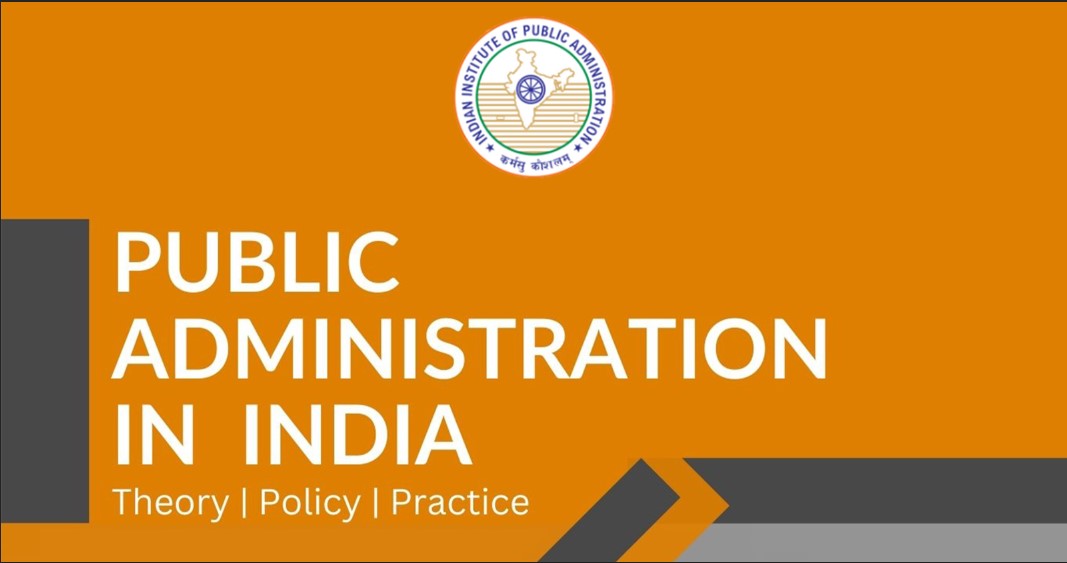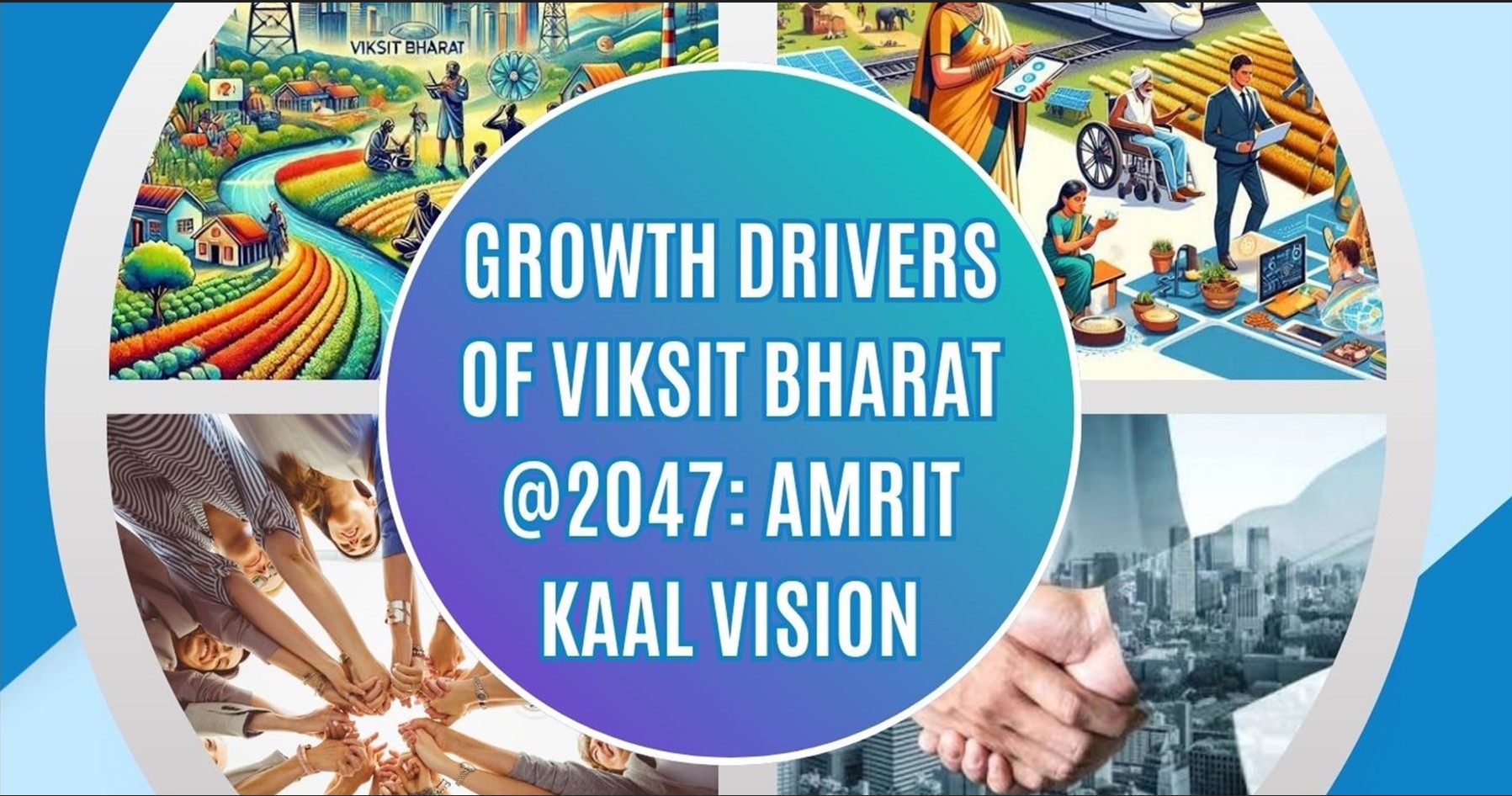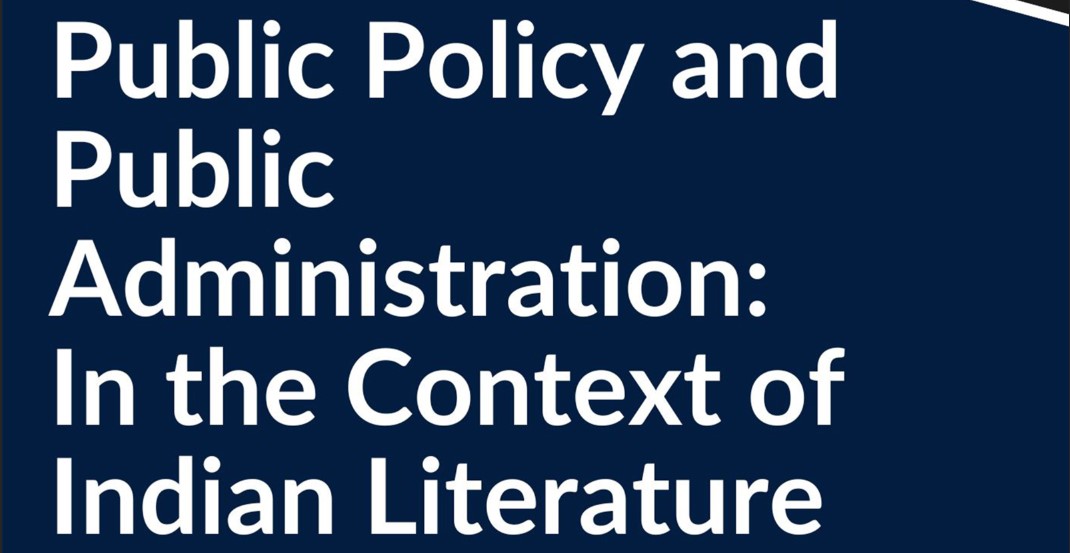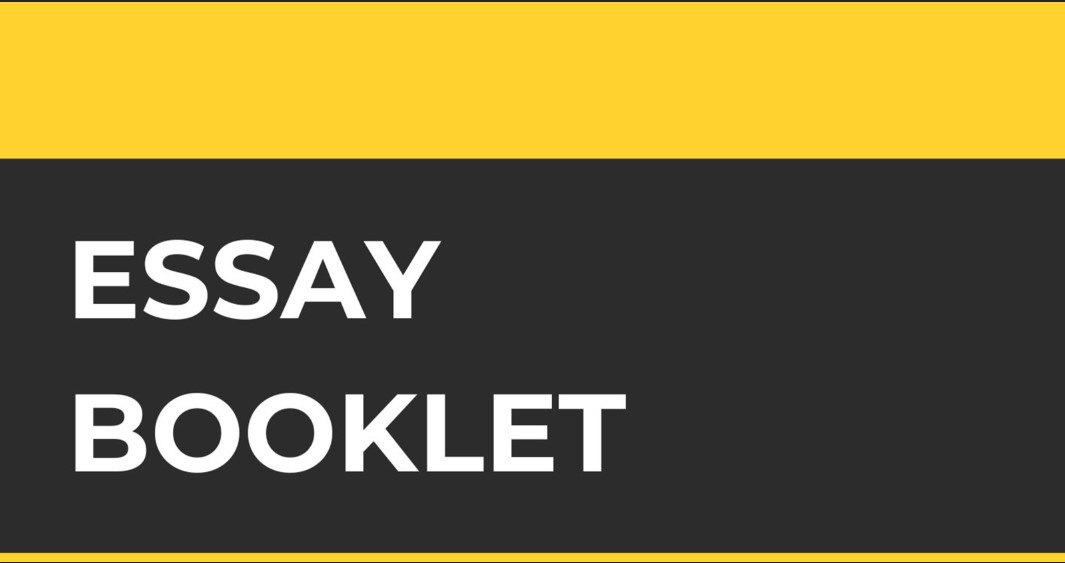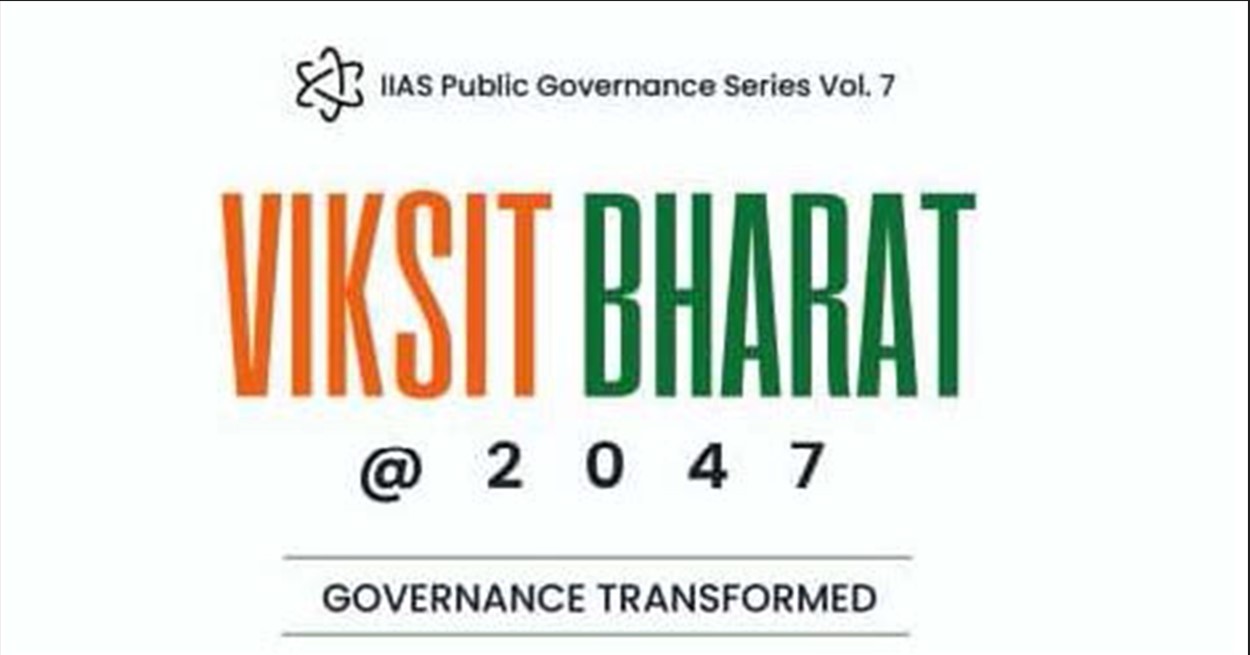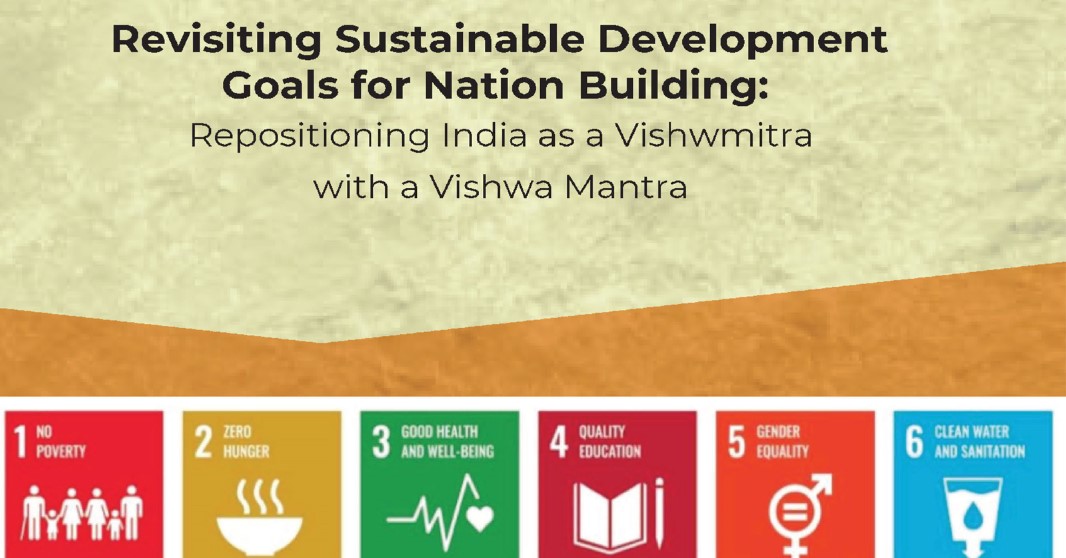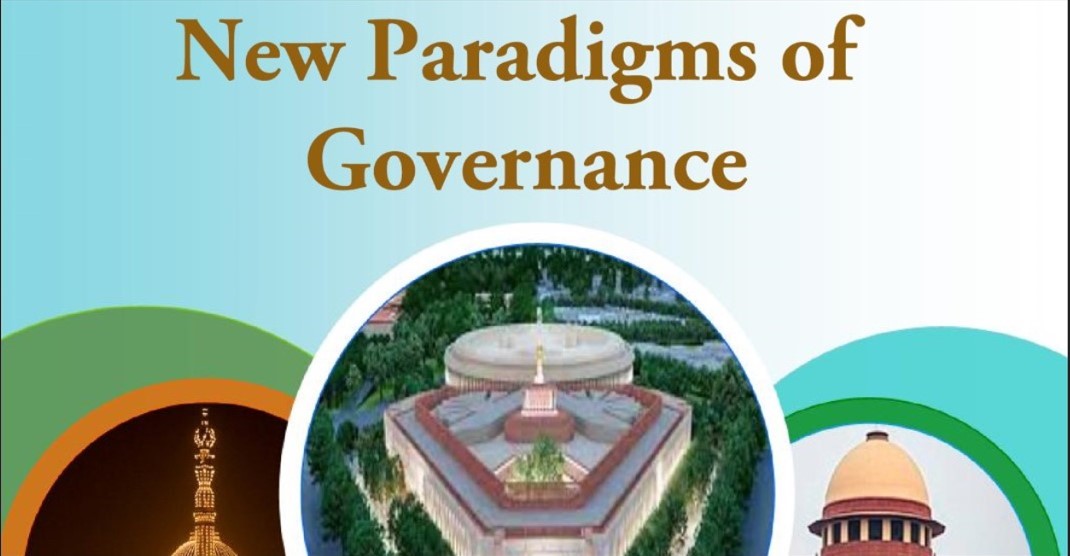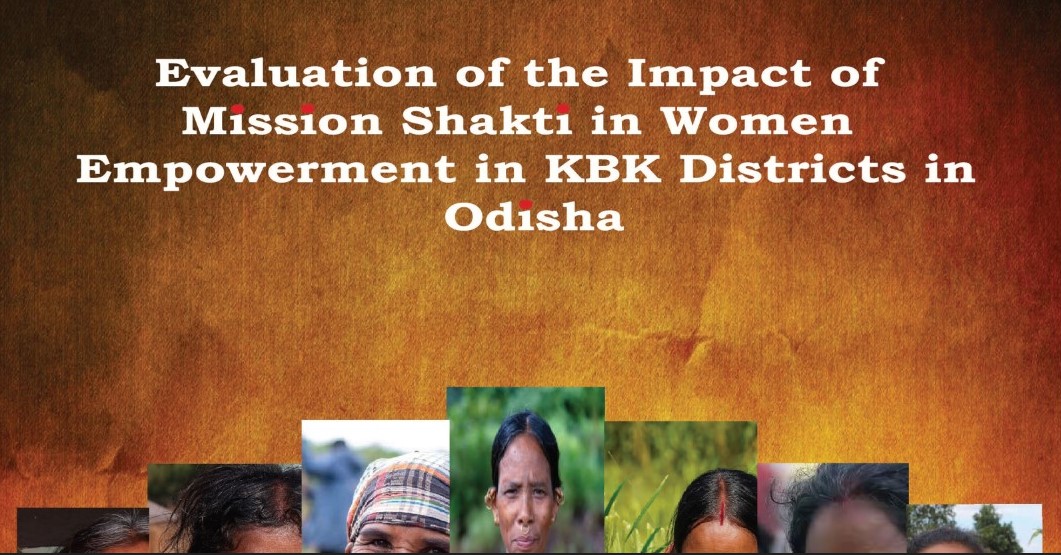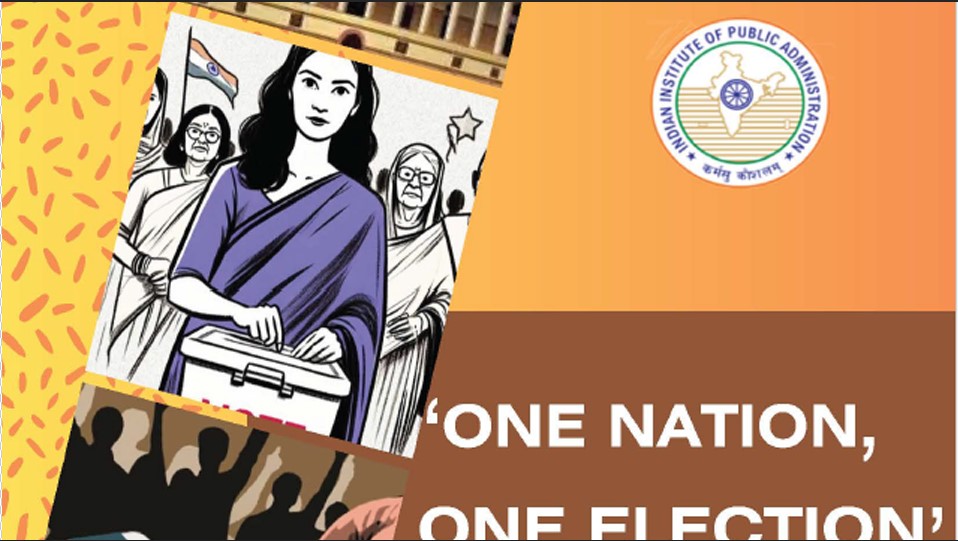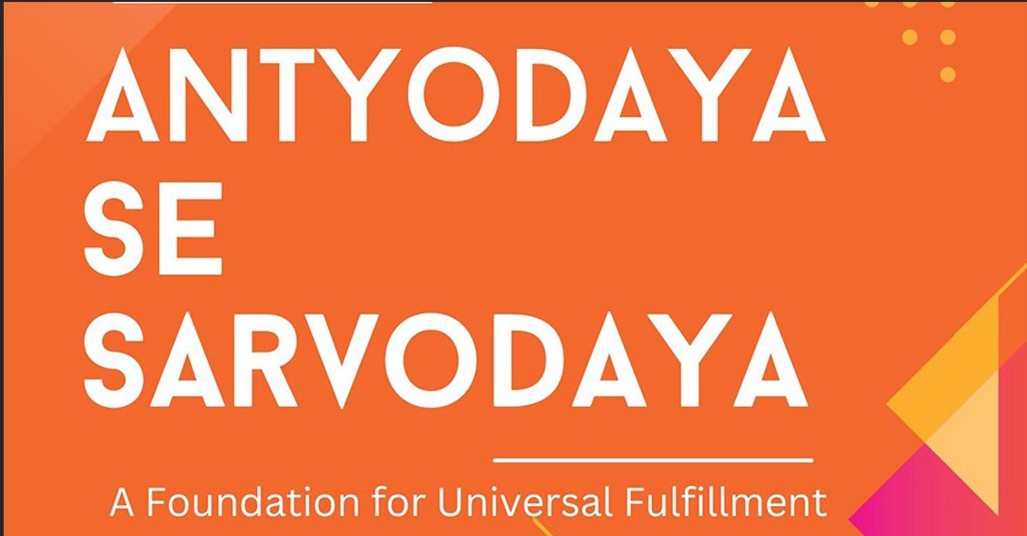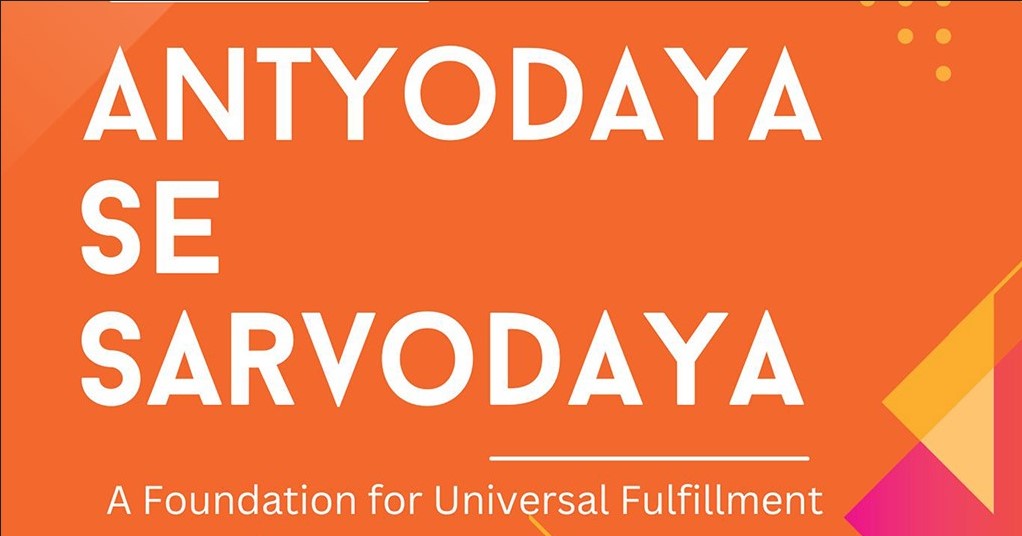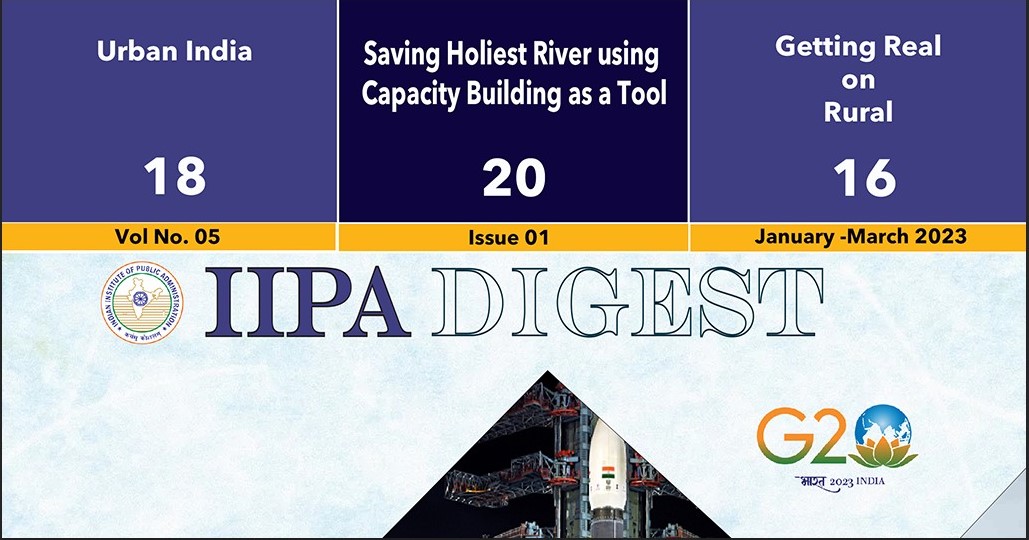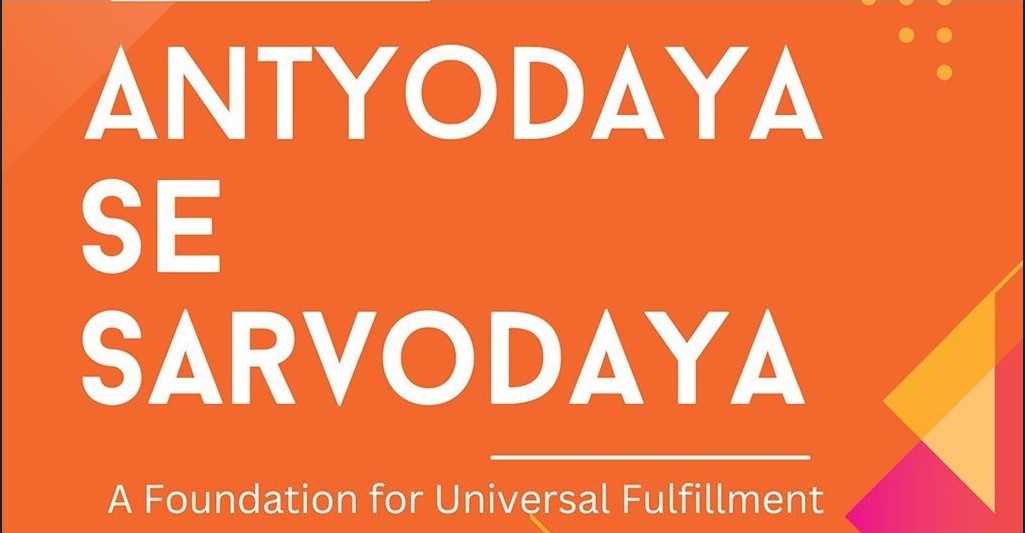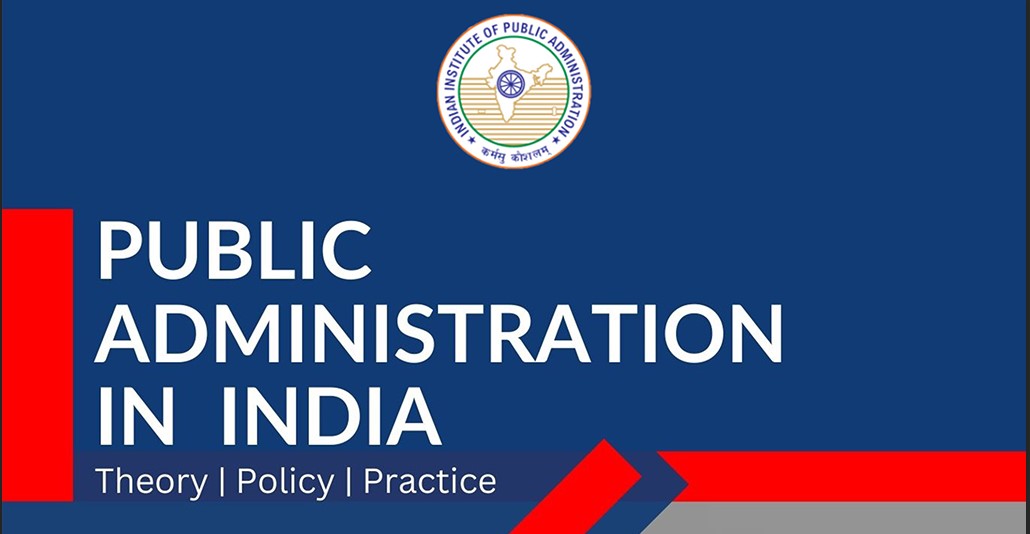Personnel Administration
Abstract
In the volatile, uncertain, complex, and ambiguous (VUCA) world, public servants’ expectations are growing daily, ranging from e-governance and citizen-centric delivery to maintaining constitutional morality. The significance of personnel administration has gone up manifold in recent years than ever before. For future civil servants, grasping this subject would not only ensure better performance in the exam but also lay the foundation for a career grounded in service, ethics, and impact. This chapter sheds light on how public servants are shaped, guided, and empowered to serve the nation. It aims to explore different topics that comprise personnel administration, namely, recruitment and training, promotion and performance appraisal, career advancement, discipline and code of conduct, pay and service conditions, employer–employee relations, grievance redressal mechanisms, and the rising significance of administrative ethics. Each section is structured to blend theoretical frameworks with contemporary administrative developments to develop the conceptual clarity of aspirants. The latest case studies and examples have also been incorporated, such as the UPSC’s reforms in civil services recruitment and recent ethical challenges faced by public officials. This would illustrate how theory meets practice in modern-day administration. Insights have been drawn from previous year UPSC Mains previous year question papers to ensure that aspirants can directly relate their understanding to the examination’s demands. For UPSC Civil Services Examination aspirants, mastery of this subject is not just about getting ready for a part of the syllabus, but learning the human machinery behind the Indian administration.
Keywords: Volatile, Ambiguous, Appraisal, Mechanism, Grievance, Incorporated, Illustrate, Aspirants, Ethical, Insights.
Introduction
The Indian bureaucracy, often referred to as the steel frame of the nation, plays an indispensable role in maintaining governance unity, integrity, and continuity. However, this steel frame is only as strong as its parts, i.e., the civil servants, their training, recruitment, discipline, motivation, and ethical compass. Personnel Administration delves into how these individuals are selected, trained, promoted, disciplined, and retained and how their service conditions are regulated to ensure optimal performance in public service. In the vast landscape of public administration, personnel administration stands out as one of the most vital pillars that directly influence governance’s efficiency, ethics, and responsiveness. Personnel administration pertains to the management of the government’s human resources, i.e., the individuals who translate policy into practice, decisions into action, and constitutional ideals into daily reality.
Transition From Personnel Management To Human Resource Management (HRM)
Over time, personnel management diversified from its initial welfare-based concern into broader fields such as IR, personnel administration, and HRD. In the 1980s, HRM evolved to become an organisational development instrument. Professional organisations like the National Institute of Personnel Management (NIPM) have contributed significantly to this development. Post-independence saw HRM grow from being a conventional personnel management function to focusing on organisational effectiveness and empowering employees. Scholars like T.V. Rao and Udai Pareek caused HRD as a developmental intervention.
Significance of Human Resource Management
HRM is the process of recruiting, training, performance appraisal, and compensating employees and of addressing their labour relations, health, safety, and equity issues. HR helps to ensure that results are achieved through people. Owing to global competition, technological advances, and economic turmoil, this statement has never been truer than it is today. Human resources management is a holistic approach to managing the individuals available within an organisation that contribute towards achieving organisational goals. HRD describes the model of facilitating workers in the process of acquiring and upgrading skills, knowledge, and competencies in order to raise organisational performance. This includes training, career development, performance management, and organisational development. Human resource management (HRM) is indispensable in surmounting governance challenges in civil services by setting employees’ goals in accordance with organisational goals. The transition from traditional rule-based personnel administration to competency-based HRM is an indication of emphasis given on improved performance and effective service delivery.
Recruitment in Civil Services
The recruitment of civil services describes the methodical process of attracting, appointing, and selecting suitable personnel for administrative positions in the government. It ensures meritocracy, transparency, and inclusivity while maintaining governance standards. In India, recruitment is primarily conducted by constitutional bodies such as the Union Public Service Commission (UPSC) and State Public Service Commissions (SPSCs).
Higher Civil Service recruitment is conducted under the authority of the Union Public Service Commission (UPSC), a standalone constitutional body founded under Article 315 of the Indian Constitution. The UPSC is tasked with holding competitive examinations and interviewing candidates. It also advises on promotion, transfer, disciplinary action, and recruitment policy. Articles 315 to 323 of Part XIV of the Constitution define the Constitution’s composition, role, and powers. The UPSC works independently and submits its reports to the president of India, whose advice is advisory and not binding. The UPSC Secretariat ensures administrative effectiveness, compliance with constitutional requirements, and transparency in the recruitment of public services.
Types and Forms of Recruitment
i. Direct Recruitment
● Competitive Examinations:
o UPSC Civil Services Examination (CSE): Three-stage process (Prelims, Mains, Interview)
o State PSC examinations: For state-level administrative services.
● Rivalry Method: Open competition among candidates.
ii. Indirect Recruitment
● Promotion: Internal elevation based on seniority and performance (e.g., IAS officers promoted from State Civil Services).
● Deputation: Hiring experts from other government departments or the private sector for specialised roles.
iii. Special Recruitment
● Reservation Policies: Constitutional Quotas for SCs, STs, OBCs, EWS, and PwDs.
● Lateral Entry: Domain-specific appointments (e.g., joint secretary-level posts).
Real-World Illustrations
● UPSC Civil Services Examination: Over 10 lakh applicants compete for around 1000 vacancies annually.
● Lateral Entry Scheme (2018): This scheme was launched to infuse private sector competence into bureaucracy.
● Reservation effect: 27% OBC quota increased representation
Reforming the Recruitment of Civil Service
• Challenge: Urban-biased UPSC recruitments (90% recruits from urban origins).
Reforms Proposed:
● Early Induction: Training candidates at 16–18 years to instil grassroots sensitivity.
● Language Inclusivity: Reducing English dominance in exams to level the field for rural candidates.
● Curriculum Revamp: aligning the syllabus with India’s socio-economic realities (e.g., agrarian issues and local governance).
Relevance for the Civil Services Examamination
● Governance: Recruitment impacts administrative efficiency and policy implementation.
● Social Justice: Reservations address historical inequities (Article 16, Constitution).
● Ethics: Transparency in recruitment reduces corruption (e.g., Jadhav vs. the UPSC case).
● Current Affairs: Lateral entry debates, exam language reforms, and bureaucratic diversity
Questions from the previous year
1. The Indian civil service system is based on the meritocracy principle, yet it faces criticism for elitism. Discuss. 2021 Mains (GS-II)
2. Examine the role of UPSC in ensuring a fair and transparent recruitment process for civil services. 2019 Mains (GS-II)
3. How does the reservation policy promote social equity in civil services? Illustration with examples. 2017 Mains (GS-IV)
Training
Training is a vital part of human resource development (HRD) in public administration. Training, as understood in the context of personnel administration, means the organised development of knowledge, skills, and attitudes necessary to successfully execute administrative duties. It ensures that civil servants remain competent, ethical, innovative, and responsive to the needs of citizens.
Importance of Civil Services Training
• Enhances administrative efficiency and effectiveness
• Prepares officers for changing governance challenges (e.g., digital governance and climate change)
• Strengthens ethical values and motivation for public service
• Equips officers with skills in policy formulation and implementation
• Career development and succession planning
Previous Year Question (UPSC Mains, GS-II, Public Administration Paper)
“Training is not merely a service function.” It is an integral part of the whole management process.” Discuss.
Objectives of the Training
1. Skill Enhancement: Technical, managerial, and behavioural skills.
2. Orientation to Roles: Sensitising officers about their administrative, legal, and ethical responsibilities.
3. Capacity building: Preparing officers for higher responsibilities.
4. Change Management: Equipping them for reforms and innovations.
5. Citizenship Training: Building Empathy, Inclusion, and Constitutional Values
Types of Training in Civil Services
Type Description Example
Induction Training Introduces new recruits to the rules, duties, and ethics of service. Foundation course at the LBSNAA
In-Service Training Mid-career training to enhance knowledge and adapt to new roles. MCTP for IAS, IFS, and IRS officers
Refresher Training Short-term updating of specific competencies. Digital literacy, the Right to Information Act, etc.
Specialised Training Subject- or domain-specific training. Public finance, disaster management, etc.
On-the-Job Training Practical training while performing duties. Mentoring by senior officers
E-Training / Online Training Modules with technology-enabled scalability. Courses on the iGOT Karmayogi platform
Institutional Training Framework in India
Institution Function
LBSNAA (Mussoorie) Apex Training Institute for IAS Officers
ISTM (Delhi) Train CSS officers, conducts behavioural and administrative training
SVPNPA (Hyderabad) National Police Academy for Integrated Security (IPS) officers
National Academy of Customs, Indirect Taxes, and Narcotics Trains IRS (C&IT)
State Administrative Training Institutes Train state service officers
The Capacity Building Commission Apex body under the Karmayogi Mission
Mission Karmayogi: A Paradigm Shift
● Launched: In 2020, by the Government of India
● Objective: Shift from a “rule-based” to a “role-based” HR system
● Key Features:
o iGOT Karmayogi platform: a digital learning environment
o Competency Frameworks for Each Role
o Continuous performance-linked training
• Significance: A holistic, citizen-centric, and adaptive training culture is brought.
UPSC Relevance: Questions on Mission Karmayogi appeared in GS-II and Public Administration.
Challenges in the Training System
• Lack of need-based training modules
• Low motivation for mid-career training among officers
• Resource constraints in state ATIs
• Gap in the evaluation and feedback mechanisms
• Limited integration of career progression
Recommendations for the Reform
• Linking training with promotions and appraisal of performance
• Need assessment for tailored training programmes
• Strengthening state-level training institutes
• Encourage cross-sectoral learning (e.g., collaboration with academia and the private sector)
• Promote experiential and field-based training
Case studies for enrichment
• Sevottam Model Training: Used in capacity building to improve citizen service delivery.
• MCTP (Mid-Career Training Programme): Focuses on leadership, innovation, and global best practices.
• District Collectorate Training (IAS probationers): Combines field experience and theory.
Training is the foundation of a responsive and ethical bureaucracy. With the rise of complex governance challenges, continuous learning and behavioural transformation have become imperative. UPSC aspirants must view training as an administrative tool that not only enhances competence but also shapes a citizen-oriented and reform-driven public administration.
Career Advancement
Career advancement in the Indian civil services refers to the structured progression of officers through hierarchical ranks governed by a hybrid system of seniority and merit-based evaluations. It encompasses training, promotions, empanelment for key roles (e.g., joint secretary), and specialisation in governance. The proposed system is designed to balance efficiency, equity, and responsiveness to administrative needs.
Types and Forms
i. Promotion Systems:
o Time-bound promotions: Automatic elevation after fixed tenures (e.g., IPS officers move to the SP rank).
o Merit-based Empanelment: Competitive selection for senior roles (e.g., Joint Secretary).
ii. Career Phases:
o Budding Phase: Induction training (LBSNAA), field postings, and cross-cadre exposure.
o Blooming Phase: Managerial roles, specialisation (e.g., finance, rural development, etc.).
o Full Bloom Phase: Policy formulation (e.g., secretary-level roles).
iii. Position Classification:
o All India Services (IAS, IPS, and IFS)
o Central Civil Services (Groups A and B)
o State Civil Services.
Real-World Illustration
● IAS officer’s Trajectory:
o Starts as SDM → District Magistrate → Empanelment as Joint Secretary (Centre) → Secretary (highest rank).
● Challenges: Urban-centric postings (e.g., Delhi) favour certain cadres, whereas others face slower growth.
Empanelment Reforms: A Case Study
● Issue: Perceived favouritism in central postings
● Reform: The Department of Personnel and Training introduced transparent empanelment criteria (2015) with clear performance metrics.
● Outcome: Improved trust but lingering disparities in cadre representation.
Relevance to the UPSC Exam
● GS Paper II: Governance, Accountability, and Institutional Reforms
● Essay Topics: "Merit vs. Seniority in Bureaucracy" or "Balancing Equity and Efficiency in Civil Services."
● Ethics (GS IV): Challenges like favouritism, ethical decision-making in promotions.
Questions from the previous year
1. The Indian civil services system is often criticised for its rigidity. Suggest reforms to make it more dynamic and performance-oriented (GS II, 2020).
2. Discuss the role of lateral entry in infusing fresh talent into the civil services (GS II, 2021).
3. How does position classification ensure equity in civil services? (GS II, 2019).
Key Challenges and Reforms
Challenge Proposed Reform
Seniority-dominated promotions Introduce performance audits (i.e., 360-degree evaluations).
Urban Bias in Postings Decentralise opportunities (e.g., rural incentives).
Theoretical training Module courses on field problem-solving.
Position Classification in the Indian Civil Services
Position classification in the Indian civil service is a basic structural model created to systematically categorise government jobs according to their particular duties, responsibilities, and qualifications. Classification is the basis for the successful implementation of a reasonable plan for disposing of India’s vast bureaucratic hierarchy of personnel. It involves a thorough analysis of each job profile based on its objectives, decision-making function and specialised qualification.
Distinctive Features of the Classification System
The Indian civil service classification system contains several unique characteristics that make it more efficient. These include comprehensive job analysis, equity and uniformity, and flexibility.
Operational Structure of the Classification System
The classification system operates using well-established categories:
• All India Services: This includes high-profile jobs such as the Indian Administrative Service (IAS), Indian Police Service (IPS), and Indian Forest Service (IFS).
• Central Civil Services: Encompasses Group A and Group B services responsible for central government matters.
• State Civil Services: handles administrative posts at the state level, which typically serve as feeder services to All India Services.
The system divides technical, administrative, and specialist positions to respond to the distinct needs of every profession. With this structured approach, significant human resource activities such as recruitment, promotion, setting of compensation, and career development can be undertaken.
Evolution and Contemporary Relevance
India’s position classification system has always been developed to meet the modern needs of public administration while maintaining its core principles. The recent reforms have sought to make the system more responsive to new needs, especially for specialist technical and multi-disciplinary skills. Even as these reforms were being made, the system still lags behind in balancing standardised classes with the necessary flexibility to permit special or new jobs in public administration.
Previous Year Question (UPSC MAINS GS Paper II-2019) Elucidate the significance of position classification in public administration.
Discipline
Discipline is the core of any effective and moral administration system. It is a foundational value that sustains the civil services’ integrity, accountability, and trustworthiness. As custodians of public interest and constitutional values, civil servants should demonstrate the best possible standards of professional behaviour. Discipline helps ensure that public officials discharge their duties with a sense of accountability, within legal limits, and in accordance with the objectives of good governance. Understanding the concept of discipline in public services is significant not only from a theoretical standpoint but also in light of real-world administrative challenges and reforms for aspirants preparing for the Civil Services Examination. This section delves into the types, frameworks, mechanisms, and changing practices concerning upholding discipline in public administration, with modern examples and questions from last year’s UPSC.
Discipline in Public Services
Discipline in the civil services means following the prescribed codes of conduct, service rules, and official orders. It encourages:
• The systemic operation of administrative systems
• Accountability to the government and the public
• Consistency in decision-making
• Upholding ethical standards and minimising arbitrariness.
Discipline protects institutional integrity and prevents civil servants from abusing the discretion and power vested in them.
Types of Discipline
1. Preventive Discipline
Preventive discipline encompasses proactive measures taken to cultivate a culture of responsibility, awareness, and ethics. These are designed to educate and sensitise public servants to the expected standards of behaviour.
Key Tools
• Orientation and Induction Training
• Service Rule Manuals and Awareness Workshops
• Preventive Vigilance Workshops During the Vigilance Awareness Week
• Ethical Decision-Making and Leadership Seminars
Contemporary Example
In 2025, the Department of Personnel and Training (DoP&T) launched a compulsory online refresher course on ethics and discipline for all Group A officers. The module included interactive case studies, situational judgement tests, and video lectures on professional conduct and disciplinary protocols. This move reflects the growing emphasis on preventive strategies to instill a culture of integrity.
2. Corrective Discipline
Corrective discipline is initiated after a violation or misconduct has occurred. It includes formal procedures to detect misconduct, assign responsibility, and impose correct penalties.
Common Disciplinary Measures are as follows:
• Verbal or written warning
• Denial of promotion or increments
• Suspension from service
• Demotion or compulsory retirement
• Dismissal or removal from the service
Real-World Illustration
In January 2025, a senior IAS officer in Maharashtra was suspended following an internal investigation of misuse of office in the transfer of government land to private groups. This reflected the intolerance of the government towards administrative wrongdoing and the increasing institutional resistance.
Legal and Institutional Framework for ensuring discipline
The Indian administrative system is backed by a robust legal and institutional framework to ensure that discipline is enforced fairly and without bias:
1. Constitutional safeguards-Article 311
• Protects civil servants from arbitrary dismissal, removal, or rank reduction.
• Ensures due process, including the right to a hearing and appeal.
• Balances discipline enforcement with tenure security to prevent political or personal victimisation.
2. Central Civil Services (Classification, Control, and Appeal) Rules, 1965, p..
• Commonly referred to as the CCS (CCA) rules.
• These rules establish the procedures, authorities, and appeal mechanisms for initiating and concluding disciplinary actions.
• Ensure uniformity and objectivity across departments and services.
Mechanisms to maintain and enforce discipline
1. Vigilance Commissions
• The Central Vigilance Commission (CVC) and State Vigilance Commissions are responsible for monitoring corruption and malpractice in public offices.
• Proactively advise departmental investigations and propose policy changes.
2. Departmental inquiries and audits
• Fact-finding procedures are conducted internally under CCS rules.
• Discipline action is evidence-based and procedural justice.
3. Technology-Based Monitoring
• Biometric attendance systems, GPS-based field monitoring, and online record-keeping tools have increased transparency and accountability.
• Decrease the occurrence of habitual absence and facilitate real-time monitoring of service delivery.
Contemporary Example: Disciplinary Action in Toll Contract Scams
In February 2025, the Ministry of Road Transport and Highways took swift disciplinary action by suspending two officials following a probe by the Central Vigilance Unit that exposed procedural violations in the allocation of toll plaza contracts. This case exemplifies the following:
• Prompt disciplinary response
• Effective use of institutional checks (vigilance and auditing)
• Public trust reinforcement through visible accountability
Mechanisms Available to Enforce Accountability and Discipline in Public Services in India
Discipline in public services is not merely about compliance with rules but also about building a culture of ethical commitment, public accountability, and professionalism. At a time when civil servants are under greater public, media, and oversight scrutiny than ever before, the need for a principled and disciplined administrative cadre has never been more urgent. Candidates for the civil services should not only master the regulations for disciplinary procedures but also absorb their essence to serve with dedication, honesty, and integrity.
Performance Appraisal
Performance appraisal in the Indian Civil Services refers to a structured evaluation process that assesses an officer’s work performance, productivity, and potential. It aims to align individual roles with organisational objectives, provide developmental feedback, recommend training, and facilitate career progression. Although the system is designed to be objective, transparent, and merit-based, challenges such as subjectivity and bias persist.
Types and Forms of Performance Appraisal in the Indian Civil Services
• Annual Confidential Reports (ACRs): This is a traditional method in which supervisors evaluate subordinates based on predefined parameters. This method is prone to bias due to the lack of transparency.
• PMES: Introduced in 2009, PMES focuses on results-based assessment with clearly defined objectives and periodic reviews.
• 360-degree feedback mechanism (proposed reform): Multi-rater feedback involving peers, subordinates, and external stakeholders for holistic evaluation is proposed.
• KPIs: These are used to measure performance in governance models and administrative effectiveness.
Real-World Illustrations
● IAS promotion hierarchy:
o Under Secretary →Deputy Secretary → Director → Joint Secretary → Additional Secretary → Secretary → Cabinet Secretary.
o Promotion Constraints: Due to intense competition, only 20% reach the Additional Secretary level, and 5% reach the Secretary level.
● CAG Audits and PMES:
o CAG’s performance audits in 2008 reviewed only 14 schemes with significant delays, highlighting inefficiencies in real-time monitoring.
o PMES aimed to streamline evaluations but faced resistance from bureaucratic inertia.
Case Study: Implementation Challenges of the PMES
● Problem: Fragmented oversight (Parliament, CAG, and investigative agencies) and delayed reporting reduce accountability.
● Reform Attempt: PMES introduced data-driven assessments, but non-standardised KPIs and supervisor bias in ACRs weakened its impact.
● Outcome: Partial success due to a lack of institutional commitment and resistance to change in civil services.
Challenges in the Indian civil services’ performance appraisal system
Proposed Reforms and the Way Forward
• Implement 360-Degree Feedback to minimise supervisor bias.
• Digitise KPIs to be tracked in real-time.
• Strengthen PMES with independent audit mechanisms.
• Balance objectivity and developmental objectives to guarantee impartiality and promote skill development.
Promotion in Civil Services
Promotion is one of the most important functions within the personnel administration domain. It is not only a reward for performance and length of service but also a way to maintain organisational efficiency, morale, and leadership continuity. In the context of civil services, where the bureaucracy is intended to act as a neutral, professional, and administrative arm of the state, promotions must be viewed as both a motivational device and an instrument of HRM. Understanding the promotion system is essential for UPSC aspirants, not only as a part of the syllabus but also as a future public administrator who may be responsible for ensuring fairness, transparency, and meritocracy in service matters. This section explores the types of promotion, criteria, recent developments, and challenges in the promotion system, with recent examples and case studies to keep your preparation contemporary and exam-ready.
Definition of promotion
In administrative terms, promotion refers to the elevation of a government employee to a higher post, which typically comes with the following:
• Greater responsibilities
• Improved pay and allowances
• Higher authority and status
Career progression is crucial for maintaining employee motivation, productivity, and a sense of recognition within the public service system.
Promotion Types in Civil Services
1. Seniority-Based Promotion
● Promotions are primarily granted based on the length of service.
● Practised largely in Group B and Group C services.
● Ensures stability and predictability and avoids internal conflicts.
Advantages
● Objective and easy to administer
● Avoids favouritism and politicisation
Limitations
● May demotivate high performers
● Can lead to inefficiency if underperforming officers rise purely by tenure
2. Merit-Based Promotion
● Promotions are granted based on performance indicators, achievements, and contributions to service goals.
● Common in higher administrative and policy-making roles, especially in Group A services.
Advantages
● Encourages innovation and efficiency
● Alignment of individual performance with institutional goals
Limitations
● Subjectivity and bias in the evaluation of performance
● Risk of favouritism without criteria transparency
3. Seniority and Merit (Hybrid Model)
● The system is most widely followed in the Indian bureaucracy, particularly in Group A services.
● Balances stability (seniority) with performance (merit)
● Promotes fairness while recognising competence.
Example
In the Indian Administrative Service (IAS), promotions to senior positions, such as Joint Secretary or Additional Secretary, often follow this balanced approach, where both APARs and seniority are considered
Recent developments and reforms
In accordance with the need for enhanced performance management and accelerated career development for high-impact officers, the government introduced the following major reforms in 2025.
1. Fast-Track Promotions Through Lateral Review Boards
A government proposal had brought in lateral review boards to accelerate the promotion of outstanding performers. This study aims to identify and promote officers who have significantly contributed to flagship missions or reform programmes, irrespective of the traditional time-bound promotion cycle.
2. Digitalisation of Promotion-Related Records
A major reform included the AI-enabled digitalisation of APARs with error detection and fraud prevention capabilities. As per the March 2025 DoP&T Circular, all ministries were directed to process promotions through a centralised, transparent digital dashboard integrated with employee records, vigilance status, and training history.
Promotion Criteria in Practice
1. Annual Performance Appraisal Reports
● Performance evaluation based on work output, behaviour, punctuality, initiative, and integrity.
● Assessed by reporting and reviewing officers.
● Heavy weighting in DPC deliberations.
2. Departmental Promotion Committees
● Constitutionally mandated bodies that examine candidates’ eligibility, records, and suitability for promotion.
● Include senior officers, subject experts, and DoP&T or UPSC representatives (for central services).
3. Vigilance Clearance and Certificate of Integrity
● Promotion cannot be processed without a clean vigilance record and an integrity certificate.
● Ensures that only officers with unblemished records are elevated.
Challenges in the Promotion System
Despite the reforms, several bottlenecks remain:
• Promotion delays due to pending vigilance cases or court litigation.
• Subjectivity in APARs, where personal bias or outdated evaluation metrics may influence performance assessments.
• Inadequate linkage between output and career progression, particularly in field postings where measurable impact is high but often under-recognised.
Promotion Based on Measurable Performance: A Case Study
In April 2025, the Income Tax Department promoted several senior officers following the successful execution of Project “TaxEase,” a digital initiative that reduced tax return processing time by 60%. The following points made this promotion notable:
• The basis was measurable impact (KPIs and timelines), not just tenure.
• It was a model for performance-based promotions under the new fast-track policy being tested in financial departments.
This case illustrates an increasing trend away from time-based promotions to results-based advancement, supporting the notion that effective service is being increasingly rewarded.
Importance of Performance Management in Public Administration and the Need for Merit-Based Promotions in Civil Services in India
This question emphasises UPSC's concern with comprehension of how promotion, motivation, and performance appraisal intersect to form a responsive civil service.
Promotion is not merely a personnel issue but indicates the government's values towards efficiency, fairness, and institutional excellence. While seniority provides stability, merit brings energy and innovation into public administration. As India’s administrative systems adapt to address the needs of a dynamic democracy, civil services must adopt data-driven, performance-based, and digitally streamlined promotion processes. As prospective civil servants, candidates need to imbibe not only the prosaic details but also the ethos of fair and meritorious service, where recognition goes hand in hand with accountability and excellence.
Pay and Service Conditions
Conditions of pay and service constitute the cornerstone of human resource management in civil services. They not only determine civil servants’ financial well-being but also play a pivotal role in shaping their morale, motivation, productivity, and commitment to public service. In the context of a welfare state, such as India, bureaucratic effectiveness has implications for the satisfaction of citizens and equitable and progressive remuneration. Compensation package design, allowance structures, and terms of service must ensure a balance between state financial viability and proper staff incentivization. This is especially critical given the changing bureaucratic expectations in a digital, fast-paced, and citizen-centric governance environment.
Definition
Pay and Service Conditions refer to civil servants’ comprehensive set of benefits, entitlements, and employment-related provisions. These include:
• Basic Pay and Periodic Increments
• Allowances such as DA, house rent allowance (HRA), and transport allowance (TA)
• Non-monetary benefits such as subsidised housing, medical facilities, and leave travel concession
• Job Security, Pension Benefits, and Retirement Policies
• Leave structure, including casual, earned, study, and maternity/paternity leave
Collectively, these elements influence job satisfaction, employee retention, and the appeal of civil services as a career option.
Pay Commissions and Their Role in the Economy
Pay commissions in India are periodically constituted to review and revise the central government employees’ salary structure. These commissions assess the cost of living, inflation, job roles, and departmental parity.
• The Eighth Pay Commission (2025) has recently proposed a forward-looking approach, emphasising performance-linked pay and flexibility in compensation models tailored to digital-era governance challenges.
• Earlier commissions, particularly the 6th and 7th Pay Commissions, introduced radical changes, such as the shift to Pay Bands and Grade Pay, and later to Pay Matrix Levels for simplification.
Key Components of Pay And Benefit
1. Basic Pay and Dearness Allowance (DA): DA is periodically revised to counter inflation, and together with basic pay, it forms the core income.
2. Allowances
● The HRA depends on the city category (X, Y, and Z classification).
● TA and other allowances (special duty, hardship area) ensure mobility and accommodation during the post.
3. Non-Monetary Perks
● Government Quarters or Leased Accommodation
● Central Government Health Scheme facilities
● LTC for domestic travel with the family
4. Pension and retirement benefits
● National Pension Scheme for those joining post-2004
● Gratuity and encashment of leave
● Pension benefits for intra-department mobility are now under discussion
Emerging Issues and Challenges
1. Wage Disparity
A significant pay gap exists between central services and many state services, leading to demotivation and frequent requests for central deputation.
2. Low Motivation at the Lower Ranks
Constables, clerks, and field staff often face stagnant pay, fewer allowances, and limited promotional avenues despite being the citizens’ first point of contact.
3. Inflexible Structure
Uniform pay increments fail to reward high performers or penalise underperformers, limiting the scope of performance culture.
Recent Developments (2025)
The Union Budget 2025–26 proposed linking 10% of DA to key performance indicators (KPIs) in ministries such as power, agriculture, urban development, and health. This is a significant shift towards variable pay systems, which aligns incentives with measurable impact.
Case Study: Ministry of Agriculture – PM-Kisan Digitisation Pilot
In March 2025, the Ministry of Agriculture launched a performance-based allowance for Krishi Mitras under the PM-Kisan scheme. Those who digitised more than 90% of the farmer records in their jurisdictions within the first quarter received a 10% bonus allowance. This enhanced digital compliance, integrity of public data, and staff motivation. The Department of Expenditure is reviewing it for possible replication in other departments.
The Motivation and Efficiency of Civil Servants
Recommendations and the Way Forward
1. Performance-Linked Incentives
Widen the scope for variable pay based on key performance indicators and peer reviews, especially for leadership roles.
2. Uniform Allowance Structure
Rationalise and standardise allowances across ministries to avoid anomalies and promote fairness.
3. The Pension Portability Reform
Facilitate the seamless transfer of pension benefits from one department/ministère to another for lateral entrants.
4. Difficult Posting of Incentives
Special allowances in the northeast, LWE area, and area of conflict zones to bring talent and avoid burnout.
5. Digital Wage Monitoring
Combine AI-based error tracking in salary disbursing systems to avert delays and introduce transparency.
Employer-Employee Relations
In the context of personnel administration, employer-employee relations are the foundation of a healthy and effective administrative system. In the case of civil services, where the "employer" is the State and the "employee" is the civil servant, this relationship goes beyond hierarchy. It is an expectation rooted in loyalty, discipline, performance, and mutual respect. Sound employer-employee relations contribute directly to the following:
• Workplace morale
• Organisational commitment
• Efficient execution of policy
• Ethical Conduct and Trust in Governance
In contrast, strained relations can lead to inefficiencies, attrition, industrial disputes, and institutional trust breakdown, severely impacting public service delivery.
Definition
Employer-Employee Relations refer to the formal and informal dynamics between the administrative authority (government/employer) and its employees (civil servants). It encompasses aspects such as the following:
• Workplace communication
• Grievance redressal
• Welfare and Recognition Mechanisms
• Levels of trust, engagement, and satisfaction
It is not only about rules and frameworks but also about the bureaucracy and the state’s emotional and psychological contract.
Institutional Mechanisms for Relations Management
1. Joint Consultative Machinery
● Established in 1966 to facilitate constructive dialogue on service matters between civil servants and the government.
● Consists of representatives from both official and staff sides and works at national, departmental, and regional levels.
2. Staff Welfare Committees
● Present across ministries to address employee well-being, recreation, and non-work stressors.
● Organise health camps, cultural programmes and welfare activities.
3. Feedback mechanisms and surveys
● Regular employee engagement surveys are being institutionalised, especially after the pandemic.
● Provides valuable data on employee morale, job satisfaction, and organisational challenges.
Contemporary Issues (2025)
Despite institutional efforts, several pressing issues challenge employer-employee relations in civil services today, which are given below:
1. Lateral Entrants and Cultural Misfits
Most lateral entry professionals who are inducted to provide domain knowledge suffer from alienation because of exclusion from the bureaucratic culture. They suffer from internal decision-making exclusion, lack of transparency in promotion routes, and unresolved grievances.
2. Transfer and Posting of Grievances
Mid-level officers frequently express dissatisfaction over non-transparent and arbitrary transfers, particularly in politically sensitive postings. This erodes the trust in the system and diminishes the performance incentives.
3. Lack of recognition mechanisms
Many departments lack formal systems to reward and recognise outstanding contributions at the individual or team level.
Best practices and innovative initiatives
In response to these challenges, several innovative reforms have been initiated, such as the "Harmony@Work" Programme (Launched by the DoP&T in 2025). It is a monthly, technology-enabled sentiment analysis tool based on anonymous employee feedback. It generates a happiness index for each ministry and department, highlighting areas that need intervention. Promoting EI-based governance and empathy-driven or compassionate leadership.
Case Study: Ministry of Electronics – 3-Tier Grievance Redressal Platform
In January 2025, the Ministry of Electronics introduced an integrated grievance and feedback system with the following:
• Local resolution units (LRUs)
• Departmental Review Boards
• Anonymous suggestion boxes with artificial intelligence tagging
Within 3 months, an internal audit report showed a 30% rise in satisfaction scores due to faster redressal, direct supervisor accountability, and follow-up transparency.
The importance of trust between the employer and employee for effective administration
Key Reforms and the Way Forward
1. Transparent Postings and Transfer Policies
o Introduce AI-based, merit-sensitive transfer portals with minimal manual discretion.
o Clear tenure security guidelines for sensitive postings.
2. Employee Recognition and Appreciation
o Annual "Public Service Excellence Awards" at departmental and district levels.
o Digital dashboards are used to track and reward performance metrics.
3. Grievance Advisory Board
o Independent committees to examine unresolved grievances and suggest systemic reforms.
o Quarterly reports to be submitted to the Cabinet Secretariat for consideration.
4.
Leave a comment
More articles from Governance & Polity
